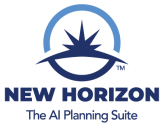
As a manager or director of a mid-sized wholesaler, retailer, or manufacturer, you’re dealing with more forecasting and planning complexities and uncertainties than ever — whether caused by internal factors like rising material costs and a tight labor market, or external natural, economic, and geopolitical challenges. Even many established supply chain planning (SCP) software vendors have had a hard time keeping up. When it comes to finding the best supply chain planning software for mid-sized companies like your organization, you’re probably looking at several alternatives. It can feel like a formidable task to choose among them.
Part of the problem is that much of the guidance out there is written for larger companies — advice that doesn’t necessarily apply to you.
This buyers’ guide for supply chain planning software will highlight the most important criteria you should consider as a mid-market organization (for our purposes, $100M — $1B in revenue).
Why Focus On Supply Chain Planning Software For Mid-Sized Companies?
Your organization has different challenges than your larger counterparts. That’s why you also need to consider different software solutions.
- You want a solution that’s the right fit for your current organization, but that’s flexible and scalable enough to grow with you.
- You want software that can easily handle your specific industry needs and challenges.
- You want a vendor with deep expertise, who understands your business and who is committed to your success.
- Most of all, you want to avoid the high costs and complexity of software better suited for large enterprises.
Because a big-name solution may not be your best bet.
Most companies who say they serve mid-market companies also target large enterprises. But the reality is that some vendors’ customer bases skew much larger than others.
Many software vendors build solutions for large enterprises because they have the biggest software budgets. Large businesses have more complex requirements and can afford to pay for esoteric capabilities, lengthy implementations, and highly specialized staff.
Unfortunately, this invariably results in software that’s more difficult to implement, configure, use, support, and provide staff and training for. These solutions are often prohibitively expensive and complex as a result.
For example, vendors like Blue Yonder, Kinaxis, and o9 tend to serve huge enterprises with seven-figure implementations and high ongoing SaaS fees and internal support costs. You, on the other hand, may be considering solutions like John Galt, GAINS, ToolsGroup, Blue Ridge, or New Horizon.
The largest vendors aren’t likely your best options. Here’s how to find the right-fit solution for you.
The Supply Chain Planning Software Buyer’s Guide For Mid-Sized Companies
You want supply chain planning software that helps your company grow profitably, mitigate risk, and increase operational efficiency. A solution that checks these boxes will help you achieve your goals.
1. A single, end-to-end supply chain planning suite
To start, you need a single holistic solution, not multiple tools and integrations that can potentially complicate your process and lead to data latency issues.
Look for an end-to-end planning solution that covers collaborative demand forecasting all the way through to detailed supply planning and scheduling. Make sure it facilitates collaboration, communication, and data access for your entire team — as well as the ability to set priorities and include your particular business rules — all with enterprise-grade security, highly configurable workflows, and robust integration capabilities.
2. A unified data repository
A unified data repository (UDR) helps you consolidate data collected from siloed solutions and create a single source of truth. Stop logging in to different applications, toggling among multiple open windows, and wrangling complex spreadsheets just to try to figure out what’s happening in your business. Make better decisions faster with the right data at your fingertips. Keep your data cleaner and eliminate redundancies.
With a UDR, you can avoid the integration headaches and data latency that often plague cobbled-together solutions.
3. A modern, AI- and cloud-native platform
Don’t settle for a legacy solution that’s been migrated to the cloud. Many established platforms are still playing catch-up when it comes to the latest technology. They’re the same old solutions given a more modern veneer.
Instead, look for a cloud-native solution that allows for continuous innovation, scalability, flexibility, and lower support costs. One that’s been built with both the cloud and AI in mind from the very beginning, not retrofitted after the fact.
Modern supply chain planning requires advanced, AI-native capabilities and analytics. The best solution for mid-market companies will analyze data and market trends, produce highly accurate forecasts, and optimize inventory levels.
4. Advanced industry-specific functionality
Ideally, you want software engineered to streamline your setup and get you up and running quickly, inexpensively, and with minimal risk. You need a solution that uses industry best practices as a starting point, with the ability to customize it to your needs.
Look for a solution that’s been built with your industry in mind, but understand that there’s no software that will fit your business perfectly right out of the box. Ideally, choose a solution that’s easily configurable without expensive additional vendor, IT, or consulting support.
5. Ease of use
Your planners and managers don’t have the time to work through steep software learning curves — and your business won’t go on hold while they do. Look for a user-friendly and modern design that minimizes your team’s learning curve and helps you to start realizing value quickly.
An intuitive look and feel will ease change management, reduce training costs, maximize user adoption, and improve planner productivity right from the beginning.
6. Accelerated time to value
Mid-sized companies can’t afford expensive, months-long implementations. You need to start creating solid plans and executing on them as soon as possible.
Look for a solution that can be implemented quickly, resulting in lower costs and faster time to value — one that produces accurate, automated forecasts and more realistic safety stock levels — ideally in one to two months or less.
The faster you can improve visibility across your entire planning process, the faster your team will be able to make better decisions with the potential to positively impact your business.
7. Ease of ongoing administration
Mid-market organizations typically don’t have unlimited budgets for IT or consulting support. That means that the more self-service software administration capabilities you can access on the front end, the better. Same with easy configuration options.
You’ll rely less on internal and external IT support, admins, consultants, and data scientists, lowering your ongoing staffing needs and costs.
8. Lower total cost of ownership
Last but not least, total cost of ownership (TCO) is one of the most important considerations for mid-market companies. It’s a concern on its own, but many of the factors we’ve highlighted here contribute to it:
- Patchwork solutions with integration challenges and data latency issues
- Siloed data and/or lack of a unified data repository
- Legacy solutions that lack native cloud and AI advanced processing and analytics capabilities
- Months-long implementations that slow time to value
- Steep learning curves for new users
- High ongoing fees and support costs
New Horizon’s Advantages
New Horizon’s planning suite is a true end-to-end solution that includes eight applications built on a common platform: Demand Planning, Multi-Echelon Inventory Optimization, Supply Planning, Buyers Workbench, Replenishment Planning, Production Planning, Sales and Operations Planning, and Strategic Planning.
You have your choice of cloud providers — whether you use Amazon AWS, Oracle Cloud Infrastructure (OCI), Alibaba Cloud, Microsoft Azure, or Google Cloud. You’ll get high performance while only paying for the computing power you need.
Our AI-native design provides superior forecast accuracy, automates demand segmentation, and automatically detects and flags data issues. It also automatically identifies the root causes of supply chain issues you may be experiencing so you can address them more quickly and with the right information.
We’ve created out-of-the-box industry templates specifically for the consumer products, manufacturing, wholesale distribution, foodservice, and retail industries, making it possible to implement our solution in as little as one month.
Experience from over 100 implementations enabled our founders to create a complete, end-to-end planning platform with highly configurable workflows and an intuitive, user-centric design.
Finally, we put your concerns about TCO first in everything we do. Quickly automate and improve your forecasting without a team of data scientists. Create superior supply plans thanks to AI, machine learning, and Facebook Prophet technology.
The Best Supply Chain Planning Software For Your Mid-Sized Company
The best SCP solution for your organization will provide visibility across your entire planning horizon, help you to make the right decisions quickly, and be right-sized for your organization (while being able to grow with you) — all while lowering your TCO.
At New Horizon, we understand your unique challenges as a mid-market company and we’ve built a platform that has your exact needs in mind.
We can help you improve forecast accuracy and service levels while minimizing inventory and costs. We help planners make better decisions with cloud-based applications that are easier to use, easier to configure, easier to implement, and lower cost to operate.
Our customers have reported significant improvements in forecast accuracy, inventory reductions, and stockouts.
To Learn More
Reach out to learn more about how New Horizon can help your mid-sized organization and see a demo.


